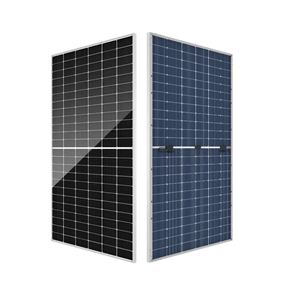Xinjie Energy Kenya Business Unit was established! Africa PV Strategy Officially Launched
Xinjie Energy Kenya Business Unit was established! Africa PV Strategy Officially Launched
I. Domestic Solar Market: From Fierce Competition to Breakthroughs
By 2025, after years of rapid expansion, China’s photovoltaic (PV) industry is entering a phase of deep adjustment. While domestic demand remains strong, growth is stabilizing, and intense competition is squeezing profit margins. Meanwhile, emerging markets in Africa and Southeast Asia are experiencing surging energy transition demands, positioning them as strategic hotspots for global PV enterprises.
As a core distributor of JA Solar, Xinjie Energy is leveraging its technological edge and policy support to tap into Africa—a region that holds 60% of the world’s best solar resources yet has a development rate of less than 1%.
Africa boasts 60% of the world's prime solar energy resources, with annual sunshine exceeding 2,500 hours in countries such as South Africa and Kenya. The region has an estimated PV potential of 7,900 GW, yet its current development rate remains below 1%.
II. The Power Crisis in Africa: A Market Opportunity
Approximately 43% of Africa’s population (about 600 million people) lacks stable electricity access. In sub-Saharan Africa, 30% of new electricity generation is expected to come from off-grid microgrid systems, making solar energy the most viable alternative.
III. Market Prospects and Key Insights from Xinjie Energy’s Executive Visit
In 2024, Mr. Li, General Manager of Hubei Xinjie New Energy Technology Co., Ltd., led a delegation to Africa to assess PV demand and policy landscapes in key markets such as South Africa, Kenya, and Uganda. The findings revealed:
Policy Incentives: Several African governments are implementing tax exemptions (including import duty and VAT waivers), financial subsidies, and long-term Power Purchase Agreements (PPAs). For example, Kenya’s National Energy Strategy aims to derive 50% of its electricity from renewable sources by 2030, promoting distributed solar and microgrid projects through community cooperation policies.
Growing Demand:
Among Africa’s 600 million people without electricity, sub-Saharan Africa accounts for over 43%, driving urgent demand for distributed solar and energy storage systems.
By 2025, South Africa’s PV installations are expected to exceed 10 GW.
Kenya is one of East Africa’s fastest-growing energy markets, with rural electrification rates below 30%, fueling the demand for off-grid solar and storage solutions.
Urban power costs remain high—commercial and industrial users pay electricity rates 30% higher than those in China, prompting businesses to adopt solar-plus-storage solutions for cost efficiency.
Technology Adaptation: With Africa’s weak infrastructure, JA Solar’s high-efficiency modules and Xinjie’s customized solutions (such as off-grid systems and lightweight thin-film solar cells) are crucial in addressing the region’s power shortages.
IV. Establishment of the Kenya Business Unit: A Strategic Leap in Localization
In March 2025, Mr. Li officially launched the Kenya Business Unit, marking a significant milestone in Xinjie Energy’s expansion into Africa. This move represents a strategic upgrade from mere "product exports" to "localized services." According to the International Energy Agency (IEA), Africa’s total PV capacity is projected to reach 125 GW by 2030. Through the Kenya Business Unit, Xinjie Energy aims to extend its reach across East Africa.
Moving forward, the company will further integrate JA Solar’s global supply chain with localized service capabilities to drive Africa’s transition from an "energy island" to a "renewable energy hub."
Xinjie Energy’s expansion into Africa is not only a breakthrough strategy for China’s saturated PV market but also a reflection of Chinese new energy enterprises’ role in global energy governance. From technology export to ecosystem building, this "Solar Westward Expansion" may position us as key players in shaping a "New Market, New Momentum, and New Peak" in the renewable energy industry.




